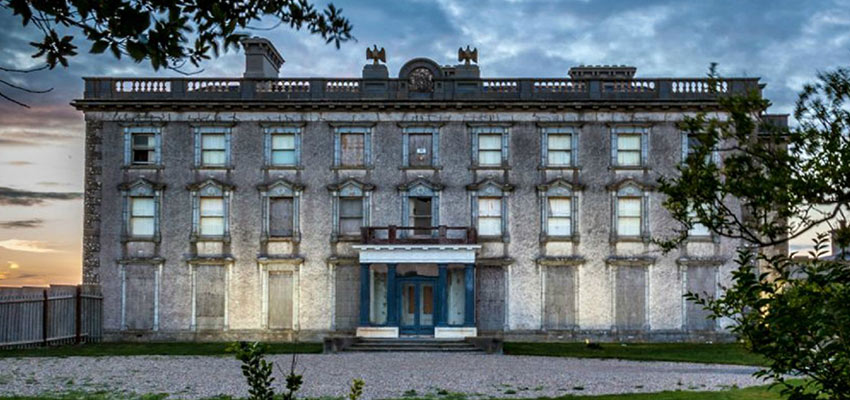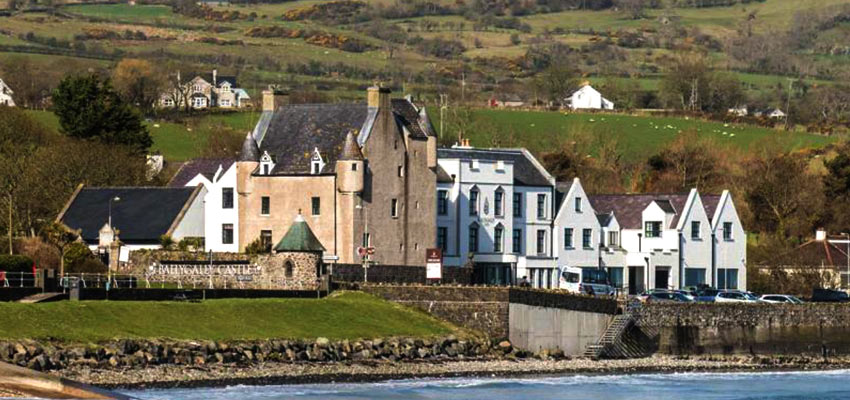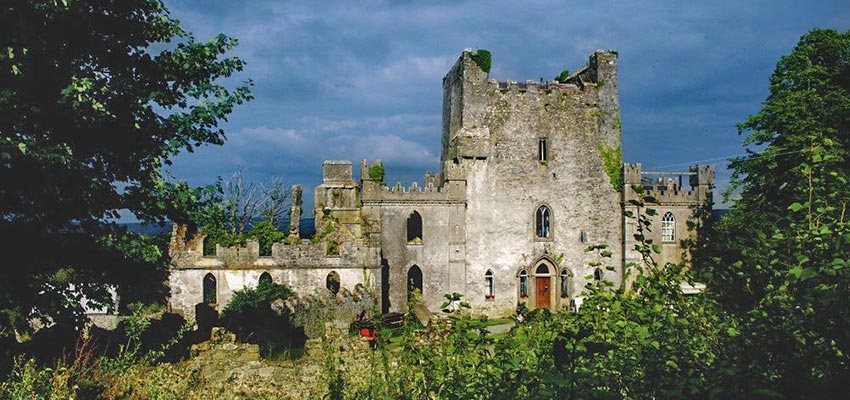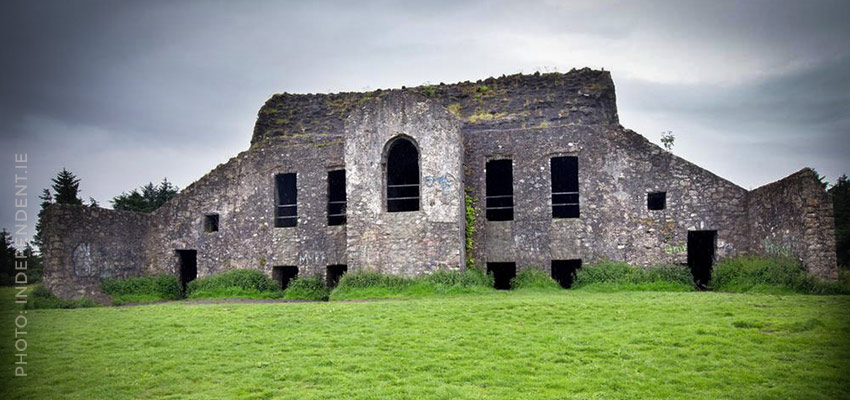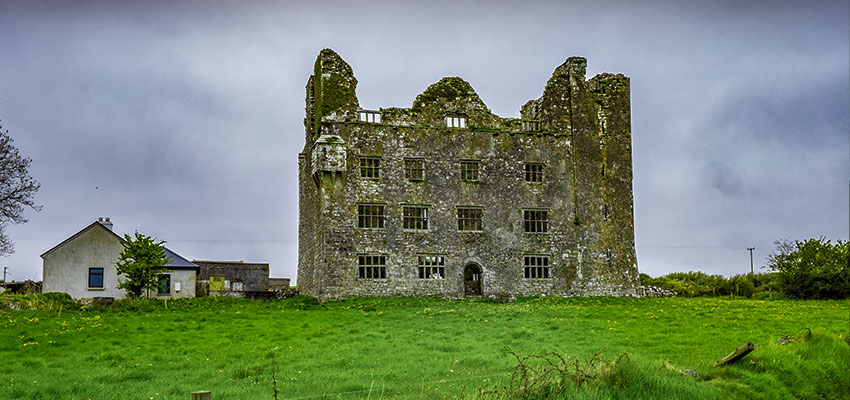It may be known as the Island of Saints and Scholars, due to its literary tradition and high -quality learning institutions, but Ireland is also a land of myths and legends, a place where superstition runs deep and the ‘Banshee’ wails in the dead of night. From haunted castles where ghosts freely roam to ancient satanic clubs that will chill you to the bone, haunted Ireland has a whole lot to offer the thrill-seeking traveller.
Take a trip around Ireland’s most haunted places and prepare to be scared!
Loftus Hall, County Wexford.
Known as the most haunted house in Ireland and said to be haunted by the Devil himself, the fate of Loftus Hall as one of the most haunted places in Ireland was perhaps set in stone due to its construction in 1350 during the time of the Black Death. However, the legend of Loftus Hall actually dates from the 18th Century, when a mysterious stranger came calling on the Tottenham family, who occupied the house at the time. Legend has it that the Tottenham daughter, Anne, soon realised that this mysterious stranger was none other than the Devil, due to the fact that he had a cloven hoof in place of a foot. Soon after, the mysterious stranger disappeared when he flew through the roof. Anne, having brought shame on the family due to her supposed hysterics, was subsequently locked away in her room where she died several years later.
It is said that Anne haunts Loftus Hall, which is said to be a hive of poltergeist activity, to this very day. The Devil also left his mark on Loftus Hall, via a mysterious mark on the roof, which visitors can view via a pre-booked guided tour of the hall.
Ballygally Castle, County Antrim.
Said to be one of the most haunted places in all of Ulster, the picturesque Ballygally Castle, which sits right on the coast, is said to be haunted by several different ghosts. The most well-known of these entities is the ghost of Lady Isabella Shaw. This so-called ‘Ghost of Ballygally’ has a penchant for knocking on bedroom doors in the dead of night. Though restless, Lady Isabella is said to be a friendly ghost, who roams the halls looking for the child who was taken from her at birth by her cruel husband, Lord James. Once in possession of his heir, legend has it that Lord James locked his wife away in a tower, where she fell –or was pushed – to her death some time later. Today, visitors can climb a spiral staircase to view the ‘Ghost Room’ where Lady Isabella lived out her tragic final days.
While paying a visit to the ghosts of Ballygally, be sure to make time for the other attractions this scenic location has to offer. Ballygally beach, a beautiful sandy beach with views that stretch for miles in all directions, sits directly opposite the castle, while the iconic Giant’s Causeway is just an hour’s drive away.
Leap Castle, County Offaly
Of the many haunted castles in Ireland, Leap Castle, with a history that is steeped in betrayal and murder, is possibly the most notorious of all. The castle is also one of the most well-known symbols of haunted Ireland, having achieved fame the world over due to appearances in TV shows such as ‘Ghost Adventures’ and ‘Most Haunted.’ From the ‘Red Lady’ who roams the castle clutching a blade, to the discovery, in the 1920’s, of hundreds of skeletal remains, this is a building with a past that is both deeply disturbing and entirely unnerving.
One of the most unsettling tales contained in the history of the castle’s dark past is the story of brothers Thaddeus and Teighe O’ Connell. Following their father’s death, the two brothers found themselves locked in a succession battle to determine leadership of their clan. Thaddeus, the older brother and a priest, was saying mass when Teighe entered the chapel and fatally stabbed him, thus inheriting the title of Chief. From that day to this, the chapel where Thaddeus was brutally slain and is now said to haunt, has been known as the Bloody Chapel.
It may surprise you to learn that despite the numerous spirits that haunt the building, Leap Castle is, in fact, a family home. Musician Sean Ryan, who bought Ireland’s most haunted castle in the 1990’s, still lives there today.
The Hell Fire Club, County Dublin
Montpelier Hill, or the Hell Fire Club, as it is commonly known, is an old hunting lodge set in the Dublin mountains, with a very strange past indeed. Founded in the 18th Century by Richard Parsons, a Freemason and the first Earle of Rosse, the Hell Fire Club invited its members to deviate from the social norms of the day and take a walk on the wild side of life. If the Hell-Fire Club had a motto, then it was probably ‘Anything Goes.’ From debauched behaviour to satanic rituals, it seems that nothing was off-limits for members of the Hell Fire Club. Indeed, it is said that the ultimate aim for members of the Hell Fire Club was to summon Satan to their meetings. To this effect, members of the club, led by their president ‘The King of Hell,’ dabbled in black magic and conducted black masses. If legend is to be believed, the Hell Fire Club also sacrificed animals and even dabbled in cannibalism, sacrificing and then consuming a servant girl in their quest to summon the Dark Lord.
Leamaneh Castle, County Clare
Of all the haunted castles in Ireland, Leamaneh Castle in County Clare is perhaps the castle with the most salacious history of all. Red Mary, known as such for her flaming locks and her fiery temper, ruled Leamaneh Castle with a fist of iron, often hanging servant girls from the windows by their hair until they died. Married no less than twenty-five times, it is said that one of Mary’s many husbands met an untimely end when his wife kicked him in the stomach until he died. Unsurprisingly, Mary made many enemies in her time, some of whom eventually captured the merry widow, encasing her in a hollowed-out tree, where she starved to death. Today, Red Mary is said to haunt the ruins of Leamaneh Castle with her screams.
Pay haunted Ireland if you dare with a customized Ireland vacation.


